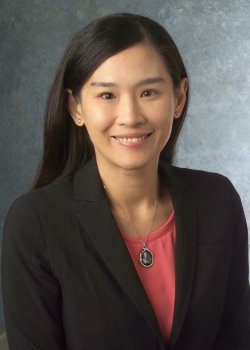
Background: As Demand for Fire-Safety Experts Grows, so Does Case Western Reserve Engineering Program
The world needs fire-safety experts. New technologies and consumer products create an ever-growing demand for engineers specially trained to prevent fires and electrical hazards.
The Case Western Reserve University Department of Mechanical and Aerospace Engineering is meeting this challenge.
The department launched the Fire Science and Engineering graduate degree program in 2015, and now is expanding the program to train graduates in the development and application of fire-safety standards.
Scientific standards are the backbone of fire-prevention engineering. The unique training curriculum will prepare graduates for the needs of industry, government agencies, insurance companies and safety and standards organizations.
Ya-Ting T. Liao, assistant professor of Aerospace and Mechanical Engineering and leader of the Computational Fire Dynamics Lab, created the standards training module with support from Underwriters Laboratories (UL), a world leader in product safety standards, testing and certification.
UL has been instrumental developing the Fire Science and Engineering graduate degree program at Case Western Reserve.
“It’s important to embed standards training in the fire sciences curriculum to prepare graduating students for industry,” said Dr. Liao. “Knowledge of standards is an essential aspect of materials research, product development, manufacturing, testing and commercialization.”
The standards training will allow students to understand how existing safety standards impact the product development cycle. This is essential in the development of innovative products that are safe, consistent and have the best chance of making it to market. In many cases, commerce and trade depend on products that undergo strict testing and evaluation for safety, Dr. Liao said.
Case Western Reserve’s fire sciences program conducts safety research and aims to share its knowledge with industry, as well as non-profit institutions and government agencies.
The university has a long-time partnership with NASA, for instance, that has included substantial research in fire protection engineering, suppression and detection for materials in space. In 2016, Case Western Reserve collaborated with NASA in the largest fire-safety experiment ever conducted in space. Research such as this is key to developing fire-safety protocols or developing new rules or new materials for space.
Dr. Liao is currently involved with research looking at how solar panels affect flammability of roof materials.
“How do solar panels affect roof fires, how do they change fire behavior and how do we remedy that? The results of our research may be used to guide standards,” Dr. Liao said.
The university also has partnerships the Federal Aviation Administration and the National Institute of Standards and Technology.
With UL, Case Western Reserve created the Fire Science and Engineering program with a multi-disciplinary approach like none other. The program is a collaboration of the Department of Mechanical and Aerospace Engineering and the Department of Macromolecular Science and Engineering.
“Our relationship with Case started in 2009 because we realized institutions needed to produce more fire experts,” said J. Thomas Chapin, vice president of research for UL and an adjunct professor at Case.
“There was a lack of knowledgeable and qualified fire protection engineers for industry, and for agencies tasked with creating and enforcing standards and codes.”
The standards training curriculum will consist of lectures, educational videos, projects, meeting with experts and mentorship from practicing standards engineers.
Students will learn about the types of standards, how standards are developed and even create hypothetical fire-safety standards for different scenarios, such as fabrics for racecar drivers or containers for lithium batteries. They will also design products and be asked to find relevant standards to consider during the product development process.
“This experience will teach students about factors to consider when developing a standard and allow students to appreciate the role of standards in product development and better understand the rationale behind standards in the first place,” Dr. Liao said.
UL experts will talk with students about project results, and the challenges in developing and refining standards.
With the new standards training, Case Western Reserve is creating a national model that may be emulated by other institutions.
